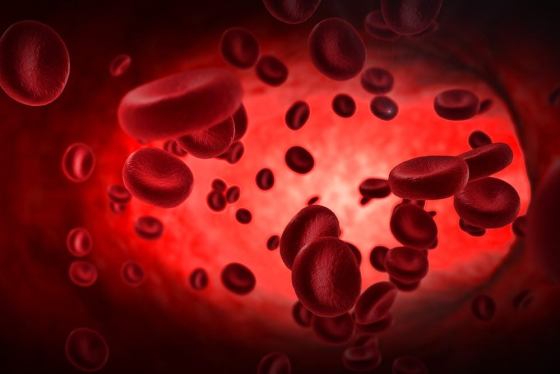Ebola virus and its clinical manifestations have undoubtedly posed a substantial threat to public health due to the episodic outbreaks with high mortality rates. The current wave of the outbreak has geographically dominated West Africa since December 2013. Inopportunely, epidemiological data has suggested case fatality ratios up to 90%.
My primary focus in this short post is to generate factual awareness within readers, in order to educate them beyond the common thought which states that Ebola is deadly. (I also intend to demonstrate that studying infectious agents are as interesting as studying humans)
What is Ebola Virus (EV)?
The culprit in this lethal wave is Zaire Ebola virus species (one of five species). This particular species of the virus is selectively virulent against humans and more vital information about EV is yet to be understood.
Precise locations and origins of the virus is speculative and it is thought that the virus is animal-borne (zoonotic). The disease has been sporadically infecting humans (predominantly in African countries) and has been causing complications since 1976.
Ebola Virus Disease (EVD)
The pathogen is able to cause hemorrhagic (internal or external bleeding) fever during late stages of the disease. Prior to that, the EVD shows typical flu-like symptoms such as fever, sore throat, headaches, diarrhea and vomiting. It has been observed that the symptoms typically start between 6-10 post-infection.
Transmission of EV
Current knowledge on transmission is not conclusive. However, it is believed that transmission occurs via direct contact of any body fluid (Saliva, blood, semen etc.) originating from a symptomatic infected individual.
Cultural practices and transmission
Cultural practices and habits within African communities have been attributed towards the rapid transmission of EV. Hugging is a norm, particularly within the religious practices in countries such as Sierra Leone and Liberia.
Burial of the departed involves kissing, touching and washing. Such practices have influenced the rapid transmission of EV.
Reservoir of EV
In this case, fruit bats have been identified as the most likely reservoir of EV. An important indication for a consideration as such is the absence of clinical manifestations within fruit-bats. Further genetic testing has confirmed the presence of EV after discovering genetic material (RNA – ribonucleic acid) which belongs to EV. Additionally, EV infections have been observed in monkeys and chimpanzees.
A hypothetical (disputed at times) method of EV transmission from infected bats to animals and humans is the consumption of partially eaten fruits, masticated fruit material left by infected bats.

Risk – Geographical
The origins of EV has been traced in African and Asian continents. Guinea, Sierra Leone, Congo, Liberia and Nigeria were named as some of the current nations with Ebola infections and threats. Although an Ebola patient has been transported and isolated within United States, it has not been official declared as risk zone.
Diagnosis
Onset symptoms are non-specific, diagnosis of EVI at an early state is therefore difficult. However, substantiating epidemiological data and evidence can be used to suspect EVI. A number of laboratory tests including serological (viral antigen based tests –ELISA) and Genetic material associated tests (Polymerase chain reaction, PCR) can be used to confirm an EVI.
Treatment
Despite it has been over 38 years since the identification of EV, a successful therapeutic has not been defined. I believe that one of the main reasons for this is the high infectious risk of EV. WHO has currently listed EV as Bio-Safety Level 4 (BSL-4) pathogen which require the people who handle it to possess specialist training.
Interestingly, a Canadian institute has offered a prototype vaccine which has not been tested on humans. Yet, the WHO has granted ethical clearance to proceed and administrate the vaccine where it is needed. (BBC- August 2014)
Remarks
. It has been 38 years (and counting!) since Ebola has been discovered; there has not been a proven and successful therapeutic candidate.
. Ambiguity of the EV knowledge has made it challenging to treat and contain EVI.
. Ebola can managed if detected early – Isolation, containment and patient fluid management has been useful so far.
. This has and will provide additional research avenues for scientists to study the virus in depth to formulate therapeutics and containment strategies.
. At some point, a party or several parties will introduce an effective therapeutic to treat EVI (And will become beneficiaries of the above lucrative process).
By Raveen R.
Biotechnology Information Coordinator at Calcey Technologies
References
Bausch, D. and Schwarz, L. (2014). Outbreak of Ebola Virus Disease in Guinea: Where Ecology Meets Economy. PLoS neglected tropical diseases, 8(7), p.3056.
BBC News, (2014). Canada to give WHO Ebola vaccine. [online] Available at: http://www.bbc.com/news/world-africa-28767695 [Accessed 14 Aug. 2014].
Groseth, A., Feldmann, H. and Strong, J. (2007). The ecology of Ebola virus. Trends in microbiology, 15(9), pp.408--416.
Monath, T. (1999). Ecology of Marburg and Ebola viruses: speculations and directions for future research. Journal of Infectious Diseases, 179(Supplement 1), pp.127--138.
Olival, K. and Hayman, D. (2014). Filoviruses in bats: current knowledge and future directions. Viruses, 6(4), pp.1759--1788.
Olival, K., Islam, A., Yu, M., Anthony, S., Epstein, J., Khan, S., Khan, S., Crameri, G., Wang, L., Lipkin, W. and others, (2013). Ebola virus antibodies in fruit bats, Bangladesh. Emerging infectious diseases, 19(2), p.270.
Prevention, C. (2014). Ebola Hemorrhagic Fever| Ebola Hemorrhagic Fever | CDC. [online] Cdc.gov. Available at: http://www.cdc.gov/vhf/ebola/index.html [Accessed 14 Aug. 2014].
Quist-Arcton, O. (2014). How A Person Can Recover From Ebola. [online] NPR.org. Available at: http://www.npr.org/blogs/health/2014/04/11/301464924/how-a-patient-can-recover-from-ebola [Accessed 14 Aug. 2014].
Who.int, (2014). WHO | Ebola virus disease (EVD). [online] Available at: http://www.who.int/csr/disease/ebola/en/ [Accessed 14 Aug. 2014].
ABUJA: Training Schedule for Basic Life Support BLS, Pediatric Advanced Life Support (PALS), Advanced Cardiovascular Life Support ACLS, First Aid, CPR, AED
PORTHARCOURT: Training Schedule for Basic Life Support BLS, Pediatric Advanced Life Support (PALS), Advanced Cardiovascular Life Support ACLS, First Aid, CPR, AED
LAGOS: Training Schedule for Basic Life Support BLS, Pediatric Advanced Life Support (PALS), Advanced Cardiovascular Life Support ACLS, First Aid, CPR, AED





